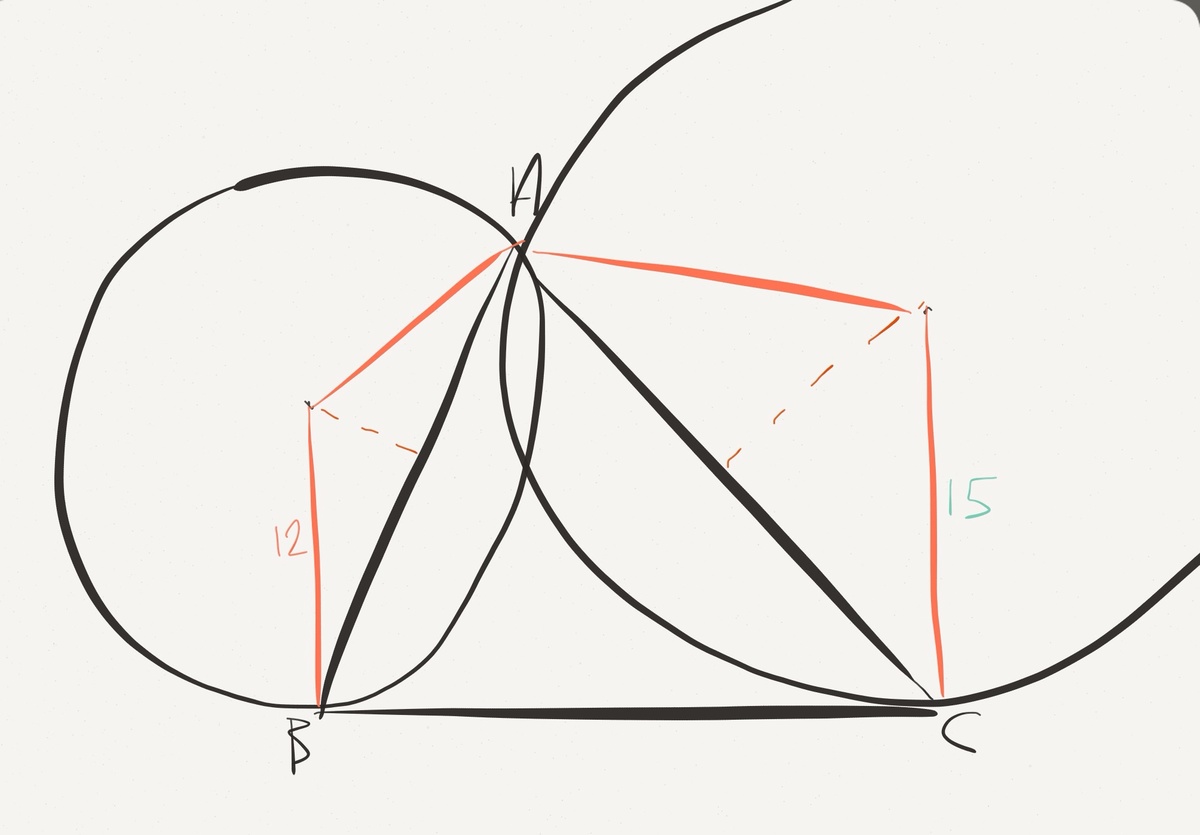This triangle is arbitrary so how do we determine the circumradius?
In Δ A B C , circle Γ 1 passes through A and B , and is tangent to B C . Circle Γ 2 passes through A and C , and is tangent to B C . Let the radii of these two circles be 12 and 15 units respectively. If the circumradius of Δ A B C can be represented as a b + c , where the surd has been simplified completely and a , b and c are integers, find a + b + c .
The answer is 11.
This section requires Javascript.
You are seeing this because something didn't load right. We suggest you, (a) try
refreshing the page, (b) enabling javascript if it is disabled on your browser and,
finally, (c)
loading the
non-javascript version of this page
. We're sorry about the hassle.
2 solutions
Freehand Diagrams for the win!

Split the isosceles triangles as shown in the diagram and we find that the angles are 9 0 − B and 9 0 − C . Therefore b = 2 × 1 5 sin C and c = 2 × 1 2 sin B . Multiply the equations together and rearrange giving: 2 sin B b × 2 sin C c = 1 8 0
But 2 sin B b = R and 2 sin C c = R so R 2 = 1 8 0 , R = 6 5 and therefore the answer is 1 1 .
A general result is that R 2 = p q , where R is circumradius of Δ A B C , and p , q are radii of tangential circles drawn as per the given conditions.
Log in to reply
Can you prove this result and give it as a second solution?
Log in to reply
Fine bro !
Log in to reply
@Venkata Karthik Bandaru – Thanks! Only reason I asked is because I preferred a Euclidean solution. :)
Log in to reply
@Sharky Kesa – I used trig in the generalisation.
Log in to reply
@Venkata Karthik Bandaru – Oh. Can you think of one without using trig?
Log in to reply
@Sharky Kesa – Maybe yes, but I think trig is simpler.
Let D and E be the centers of circles Γ 1 and Γ 2 .
and F be the center of circumscribed circle of Δ A B C .
We can see that triangles Δ A F D and Δ A E F are similar.
then: A F A D = A E A F so that R 2 = A F 2 = A D × A E = 1 2 × 1 5 = 1 8 0